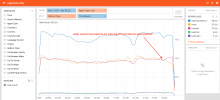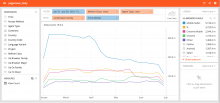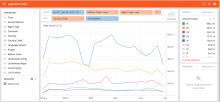(from @JKatzWMF , via email:)
I think there is possibly something wrong with how referers are currently classified:
If you look at the data, the none/internal are closely coupled and the external/unknown are as well (see link or chart below).
Based on user behavior I would expect the internal referrals to be highly correlated to the total number of non-internal (as the pages per session remain roughly constant). However, I don't expect that the internal pageviews are so tightly correlated and nearly equivalent to the "none". This consistent near equivalence seems like a very odd coincidence. The new distinction between the two in the last month is due to a known mobile Safari-related bug being resolved, but I don't think it explains what we're seeing.
Aside from being tightly coupled, the % of "none" seems incredibly high to me at 35% of total traffic. If you look at external-only traffic, that says that for every 6 google referred pages there are 4 unknown links (email/app links, direct urls). For another website I volunteer for, the % of known external traffic is 95%. For us, it is 60%. I know we don't have the tools/infrastructure that uncle Google has, but this seems to be a very big difference.
Note: All the %s I derived are from exporting the turnilo link shared above, using division and eyeballing a mostly flat daily % over the course of 2 years.



